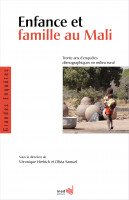
@@src2@@
Demography and its vocabulary over the centuries: a digital exploration
Population and Societies
n° 505, November 2013
When did the vocabulary of demography first enter common usage? What are the most frequently cited indicators? How was concern about depopulation gradually replaced by fears of population explosion? How have perceptions of immigration evolved? We can now explore these questions thanks to Ngram Viewer, a tool that detects how frequently different words or phrases occur in the millions of books digitized by Google.























